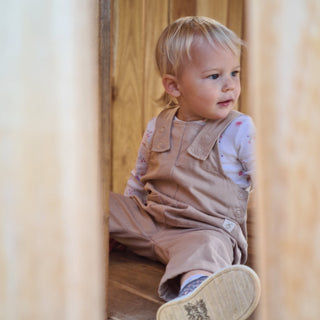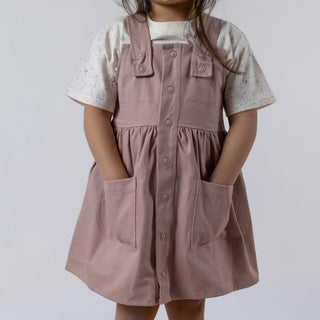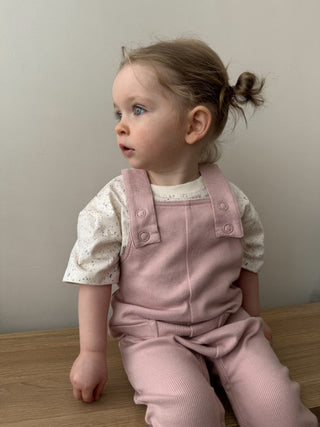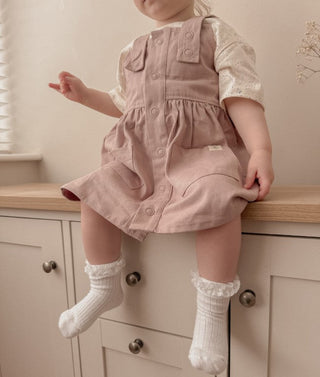You know the moment. Your toddler starts climbing, nights get choppy, and the cot no longer feels safe. That was us. Our eldest had slept twelve hours after early sleep training, then our second child arrived and everything shifted. One night she threw herself out of the cot and marched to our room. The decision was made. We were transitioning our toddler from cot to bed and we needed a plan that actually worked.
I am sharing exactly what we did, what failed, and what finally clicked. You can copy the steps or tweak them for your home. Every child is different, yet a calm structure helps everyone breathe.
Why we moved when we did
We didn’t rush the move. We waited for a real trigger, not just a birthday. Our eldest had slept beautifully from six months, thanks to gentle sleep training and a regular bedtime routine. When her sister arrived at eighteen months, nights became unsettled. She woke more often and needed more reassurance. The cot escape sealed it. Safety came first, so the bed was the obvious next step.
If you are unsure about timing, watch for three signs. Climbing that risks a fall. Repeated wake-ups that are new for your child. Rising anxiety around the cot despite a stable routine. If those boxes tick, your energy is better spent planning the transition than fighting the cot.
Make the bed feel special, not scary
I wanted the bed to feel like an upgrade, not a punishment. We gave her ownership from the start. She chose a penguin duvet and pillow, then helped carry the bag to the car. It was not my pick, but it was perfect for her. That choice mattered when bedtime nerves appeared.
We practised in daylight first. We lay on the new bed, tucked in together, and read for five minutes. No pressure to sleep. Just a calm rehearsal so the first night did not feel new and frightening. We kept the bedtime routine exactly the same. Same bath. Same story. Same song. Only the sleeping place changed.
Small tweaks that helped:
-
Remove the cot completely so you are not sending mixed signals.
-
Keep a warm nightlight so shadows do not become monsters.
-
Place familiar soft toys at the pillow for comfort cues.
New bed, same ritual. That message reduced tears within two nights.
Boundaries without battles
Our first conflict was the stair gate. She hated it across the doorway and it spiked her anxiety. Take it off and we knew she would appear beside the bed at 2 am. Keep it on and bedtime became a standoff. We needed a middle ground that protected sleep without feeling like a prison.
We decided the gate stayed at night, yet we practised “open gate time” during the day. She learned that the gate was not about punishment. It was about sleeping safely until morning. We paired the gate with clear language and calm repetition. “Bed is for sleeping. We will come back to check on you.” It felt gentle and firm at once.
Two practical extras helped the boundary feel kind. We kept a clear path to the potty, with a simple rule to call us if she needed it. We also made a cosy reading corner in the room for early wakes, with the understanding she could look at books quietly until we arrived.
Rebuilding independence in daylight
Our daughter still wanted a hand on her back to fall asleep. Night-time was too loaded to practise independence, so we moved the work to the day. We used the morning nap slot, when she was naturally tired, to rehearse separation. The script never changed. “Mummy/Daddy is going to make a cup of tea. I will be back in a few minutes.” Then we returned when we said we would. We stretched the minutes slowly across the week.
After several days, her body started doing the rest. She settled without a hand. That small win during the day gave us the confidence to try again at night. Same words. Same check-ins. Same calm tone. Familiarity is powerful; it carried us through the first week.
Wake to sleep, explained like a parent
I promised to keep this in and to keep it simple. Wake to sleep means you gently rouse your child before their habitual wake-up times. The goal is to reset the sleep cycle, so the learned wake does not fire. It sounds strange until you see it work.
Our daughter woke at roughly 11 pm, 2 am, and 4 am. For seven nights, we set alarms thirty minutes earlier than each wake. We went in quietly, touched her arm, or kissed her forehead. She stirred, rolled, and sighed; then we left immediately. She did not fully wake, which is the whole point.
By night five, the 11 pm wake disappeared. By night seven, the 2 am wake faded. We stopped as soon as the pattern broke and kept everything else in the routine identical.
Three rules kept it sane and safe:
-
Keep it brief; ten seconds is enough to nudge a cycle.
-
Do not talk; even a whisper can start a conversation.
-
Stop once the habitual wakes reduce; you are done when the pattern changes.
It is not a magic trick. It is pattern interruption, paired with predictable days and calm boundaries at bedtime.
What finally worked, in one tidy list
If I had to recreate our exact process, I would follow this order again.
-
Create ownership and comfort
Let them choose bedding. Rehearse on the bed in daylight. Keep the routine identical. -
Set kind, predictable boundaries
Gate closed at night, open in the day. Clear rules. Calm follow-through. -
Practise separation when success is most likely
Use the morning nap slot. Same reassurance phrase. Stretch checks gradually. -
Use wake to sleep to break habit wakes
Nudge the cycle before it fires. Keep contact minimal. Stop when wakes fade. -
Stay boring at night
Reassure without chatting. No lights. No new cuddly toys or songs. -
Track progress so you both see wins
We used a sticker chart. It sounds small; it works beautifully for confidence.
By her second birthday, we had three consecutive twelve-hour sleeps again. It took about a month to stabilise, which felt long because our newborn was feeding every three hours. The plan carried us through the chaos.
Expect feelings, then plan for them
There were wobble nights. She cried for the gate on night two. We almost removed it. We did not. Night three improved, night four dipped, and night five felt calmer. Progress with toddlers rarely looks like a straight line.
You will want to scoop them up and bring them to your bed. Some families choose co-sleeping and that genuinely works for them. We decided to rebuild confidence in her room, with us close by for reassurance. Choose the approach that suits your family values and your home.
I kept reminding myself of two truths. You are not abandoning your child; you are teaching a lifelong skill. Your tone is the anchor they borrow; if you sound calm, they feel safer.
The kit we actually used
You do not need a shopping spree to make this work. A few simple items helped.
-
A breathable toddler pillow and a lightweight duvet she chose herself.
-
A nightlight with a very low, warm glow for orientation.
-
A quiet door latch so checks do not wake light sleepers.
-
A soft floor mat beside the bed for the occasional tumble.
If you want help choosing breathable layers for changing temperatures, our guide to the best organic baby sleepwear for every season keeps fabrics simple and skin friendly. And if you are refreshing the room while you transition, our post on creating an eco-friendly nursery has practical ideas that do not cost the earth. For a wider seasonal approach to comfort, read the Complete Guide to Dressing Your Baby for Every UK Season for easy layering logic.
Final thoughts
Transitioning a toddler from cot to bed is equal parts logistics and emotion. Give the bed meaning with choices they own. Keep boundaries kind and predictable. Practise independence in daylight when success is most likely. Use wake to sleep to break unhelpful patterns. Hold your nerve for a week, then judge the trend, not one hard night.
You will feel it working when bedtime is calmer, checks get shorter, and mornings feel lighter. That is your sign the plan fits your child, not a textbook.






























